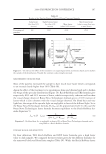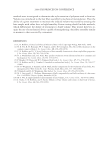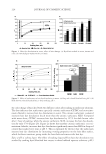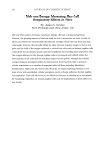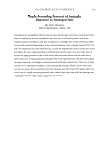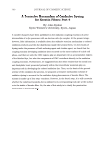2008 TRI/PRINCETON CONFERENCE 123 (7) J. M. Lim et al., J. Cosmet. Sci., 57, 475 (2006). (8) K. Keis, K. R. Ramaprasad, and Y. K. Kamath, J. Cosmet. Sci., 55, 423 (2004). (9) K. R. Ramaprasad, K. Keis, and Y. K. Kamath, Abstracts of Papers of the American Chemical Society, 230, U4294 (2005). (10) I. Motoyoshi et al., Nature, 447, 206 (2007). (11) A. Guiolet, J. C. Garson, and J. L. Levecque, Int. J. Cosmet. Sci., 9, 111 (1987). (12) S. Nagase, N. Satoh, and K. Nakamura, J. Cosmet. Sci., 53, 387 (2002).
125 J. Cosmet. Sci., 60, 125–133 (March/April 2009) Approaches to polymer selection for mascara formulation YELENA LOGINOVA, VIBHA SHAH, GLENN ALLEN, RALPH MACCHIO, and ALAN FARER, COTY, Inc., 410 American Road, Morris Plains, NJ 07950. Synopsis The use of hair-care and hair-styling polymers in mascara formulation is well known. This paper introduces pre-formulative evaluation of fi lm formers which are intended to be applied on eyelashes for mascara develop- ment to screen fi lm formers more effectively. The fi lm-forming characteristics of randomly selected hair- styling polymers were evaluated under the infl uence of pH, temperature, surfactant, and pigment dispersion. The selected polymers included acrylics, polyurethanes, and a pyrrolidone, all of which are used throughout the hair-care and mascara industries. An Erichsen Model 299/300 Pendulum Damping Tester was used to determine fi lm hardness. In analyzing samples by the effect of temperature, the hardest neat polymer, a sty- rene-acrylate, softened 30% after heating. For most of the other polymers, the hardness was slightly lower compared to the neat polymer. The addition of pigment didn’t signifi cantly infl uence the hardness of one acrylic copolymer and a urethane dispersion, but most of the other polymers exhibited a reduction in fi lm hardness. Various hardnesses were observed with different surfactants and different pH’s. INTRODUCTION The key to successful mascara formulation is a fl exible lash-styling and shape-holding coating. The complex physical-chemical structure of mascara comes from the relationship between waxes, fi lm formers and other functional ingredients. The polymer behavior after interaction with other constituents in mascara formulation unpredictably changes. The empirical way of polymer selection requires a number of mascara batches until the right polymer will be chosen for the particular mascara system. Traditionally, the selection and testing of polymers for mascara formulations is based on related hair-care and hair-styling technologies, but mascara technology is different than a hydroalcoholic solution of fi lm-forming polymers, aerosol foams and setting hair gels which are used in the majority of hair-styling products. Although hair-spray technology seems to be not that close to mascara formulation, it could be considered in terms of fi lm formers and testing of their properties. The essential components of hair styles and hair sprays compared to mascara are presented in Table I. Reviewing formulations for hair products in comparison to mascara (Table II) shows that mascara development requires special thought for selection of fi lm-forming polymers. Table II represents the similarities and differences in formulation approaches for these products.
Purchased for the exclusive use of nofirst nolast (unknown) From: SCC Media Library & Resource Center (library.scconline.org)














































































